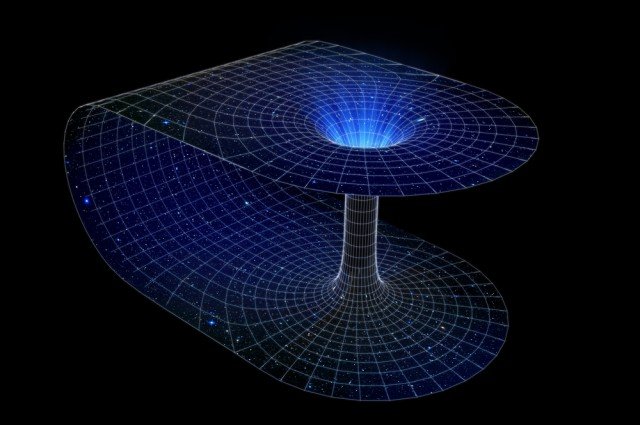
What is a Wormhole ?
A wormhole is a concept that represents a solution of the Einstein field equations: a non-trivial resolution of the Ehrenfest paradox structure linking separate points in spacetime. A wormhole can be visualized as a tunnel with two ends, each at separate points in spacetime.
The Einstein equation predict the possibility of wormholes' existence so wormholes are consistent with the general theory of relativity.
The Wormhole hype !
This existence often purchase the time travelling. Indeed this travel could be faster than travelling at the light speed, because light speed as we know correspond to inertie speed in the spacetime. In this case we we could make like a jump in the spacetime universe component.
I will make a complete doc about this subject. Just retain that this concept is use in the Interstellar movie for travelling in the other galaxy.

A Telescope Could Seen Them
Whether wormholes actually exist theoretically, it remains to be seen. A new study propose that they could potentially leave dark, telltale imprints in the sky that might be seen with telescopes.
Remember that the sky is not Dark ! Because our vision is focus on a short interval of the light spectrum, we see a dark sky but the sky is very shinny according to different kind of waves and rays ( radio wave, X-ray, Gamma ray etc...).
But around the wormhole Photons (light particles) will form a light circles and let a black part inside it. This means that the light that enters inside never go back. Such a shadow would be similar to those cast by black holes. The wormhole could be detected in the same way as black hole.
Indeed the main part of scientists like Stephen Hawking think that wormhole could be only very small. So its shadow would appear tiny, so astronomers are linking radio dishes across the globe to form an Earth-sized telescope, called the Event Horizon Telescope.
Rajibul Shaikh, a physicist at the Tata Institute of Fundamental Research in Mumbai, India, found that a certain type of rotating wormhole would cast a larger and more distorted shadow than the one cast by a black hole.
"Through the observation of their shadows, it might be possible to distinguish between black holes and wormholes," Rajibul Shaikh.
Researchers have calculated a rotating wormhole's shadow before, but they overlooked the effect of the wormhole's "throat," which connects its two ends, Shaikh said. Using the new analysis, astronomers could, in principle, identify a wormhole shadow when they see one.
References
For more details:
Great topic, I think wormholes are amazing for research!